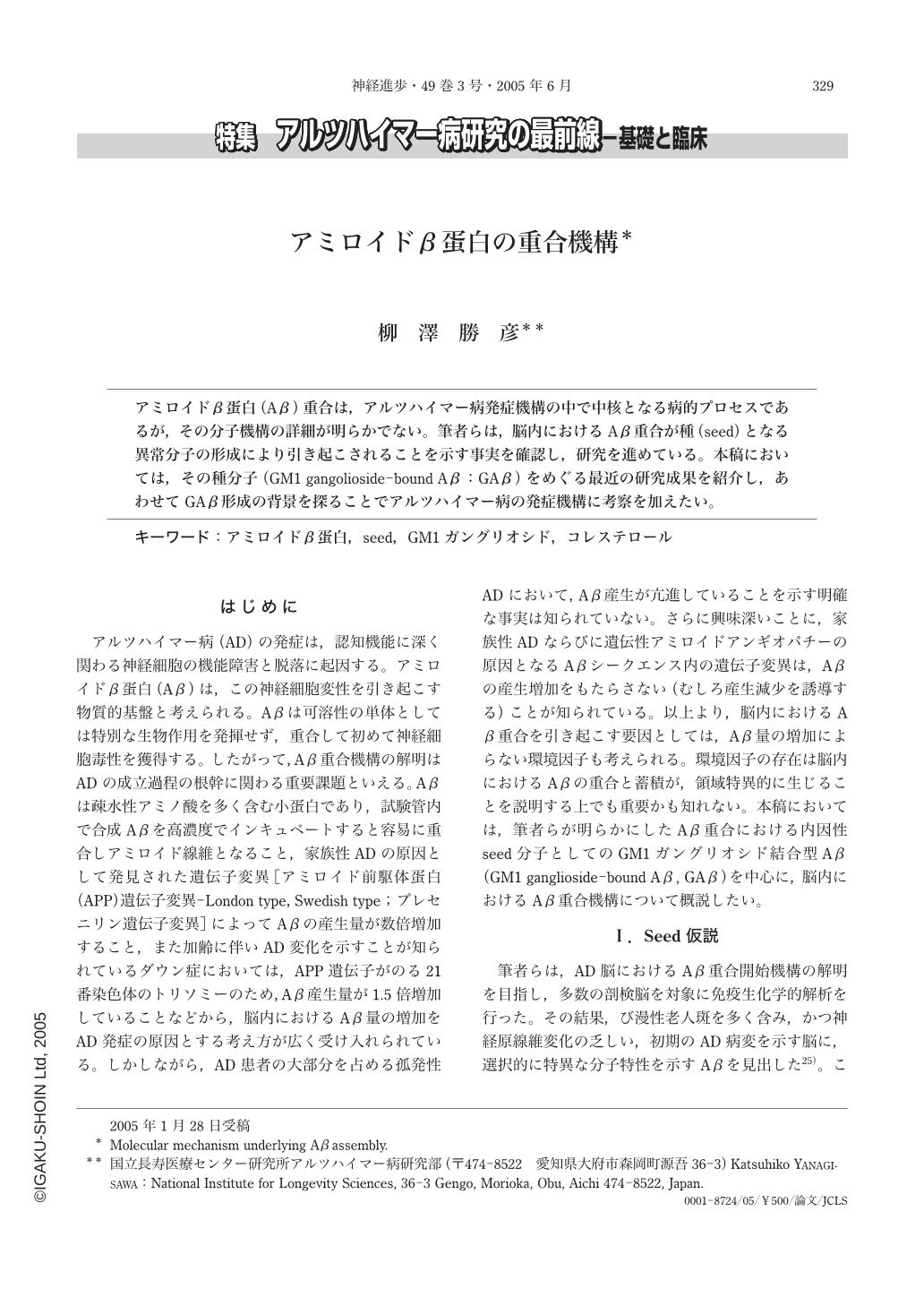Japanese
English
- 有料閲覧
- Abstract 文献概要
- 1ページ目 Look Inside
アミロイドβ蛋白(Aβ)重合は,アルツハイマー病発症機構の中で中核となる病的プロセスであるが,その分子機構の詳細が明らかでない。筆者らは,脳内におけるAβ重合が種(seed)となる異常分子の形成により引き起こされることを示す事実を確認し,研究を進めている。本稿においては,その種分子(GM1 gangolioside-bound Aβ:GAβ)をめぐる最近の研究成果を紹介し,あわせてGAβ形成の背景を探ることでアルツハイマー病の発症機構に考察を加えたい。
A fundamental question about the early pathogenesis of Alzheimer's disease(AD) is how toxic aggregates of amyloid β-protein(Aβ) are formed from its nontoxic soluble form. The expression of genetic mutations responsible for familial AD is likely to induce the formation of neurotoxic aggregates of Aβ by accelerating cellular Aβ generation. However, there is no evidence that Aβ generation is enhanced in sporadic, late-onset AD, the major form of the disease. Thus, it is reasonable to assume that Aβ aggregation and deposition in conventional AD are induced by unclarified environmental factors.
We previously identified a novel Aβ species, characterized by its tight binding to GM1 ganglioside(GM1), in human brains which exhibited early pathological changes associated with AD. On the basis of the molecular characteristics of the GM1-bound Aβ(GAβ), including its altered immunoreactivity and a strong tendency to form large aggregates of Aβ, we hypothesized that Aβ adopts an altered conformation by its binding to GM1 and initiates the aggregation of soluble Aβ by serving as a seed. Subsequent to our initial report, several investigators performed to in vitro studies and their results obtained so far supports our hypothesis. To validate our hypothesis, we have recently performed experiments using a novel monoclonal antibody raised against GAβ purified from an AD brain. On the basis of the results of our studies, we concluded that GAβ has a conformation distinct from that of soluble Aβ and initiates Aβ aggregation by acting as a seed. Furthermore, GAβ generation in the brain was confirmed by both immunohistochemical and immunoprecipitation studies.
In regard to the significance of environmental factors to induce Aβ aggregation and deposition, we may have to pay particular attention to the hereditary Aβ variants. The development of hereditary cerebral amyloidosis, which are caused by APP gene mutations within the Aβ sequence. First, the levels of secreted Aβ42 are not increased but rather decreased by these mutations, including the Dutch(E693Q), Italian(E693K), and Arctic(E693G)types except for Flemish(A692G)type;and second, the Dutch-type Aβ predominantly deposits in the blood vessels of the brain whereas the Arctic-type Aβ was suggested to preferably deposit in the parenchyma of the brain. We have recently found that the Arctic-type Aβ rapidly aggregated in the presence of GM1. Taken together with results of our previous studies, it is strongly suggested that GM1 plays a critical role in the aggregation and deposition of Aβ in the brain parenchyma.
In conclusion, our studies imply a mechanism underlying the onset of AD and also suggest that an endogenous seed can be a target of therapeutic strategy.

Copyright © 2005, Igaku-Shoin Ltd. All rights reserved.


